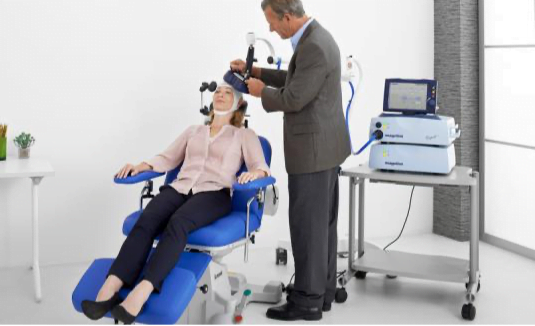Transcranial magnetic stimulation therapy targets brain areas associated with mood
Many individuals who are suffering from severe depression have tried a variety of antidepressants or drugs. Although the medications can aid some people, they are systemically active (circulate throughout the body). This frequently results in unpleasant side effects including weight gain, sexual difficulties, nausea, drowsiness, and dry mouth.
In clinical trials, Fildena 100 tablets online one in two patients exhibited substantial symptom relief and one in three reported a total cure of their problems.
TMS was recognized by the American Psychiatric Association (APA) in their 2010 Practice Guideline for the Treatment of Patients with Major Depression. These recommendations provide advice on how psychiatrists should treat depression. It’s also an FDA-approved therapy that has shown to be effective in treating patients with severe depression who haven’t responded to antidepressants.
Transcranial magnetic stimulation (TMS) is a noninvasive technique for stimulating portions of the brain that are underactive in people with depression. TMS works by using magnetic pulses precisely targeted to areas of the brain associated with mood, which are underactive in depressed individuals.
How transcranial magnetic stimulation therapy works
Transcranial magnetic stimulation (TMS) is a non-invasive treatment that does not require sedation. It works by placing an electromagnetic coil over precise locations of the scalp and sending targeted magnetic pulses, comparable to an MRI, into regions of the brain linked with mood control and sadness.
Experienced psychiatrists oversee TMS treatments and monitor progress
You should be awake throughout the TMS therapy and may resume normal activities immediately after each treatment. This is not the same as electroconvulsive therapy (ECT). You are free to drive yourself to and from the appointment because there are no side effects on alertness or memory.
During the procedure, you will feel the curved device that houses the magnetic coil, resting against your head. You’ll also hear a clicking Cenforce 100mg tablets sound that usually lasts for a few seconds.
TMS treatments:
- Take less than 45 minutes
- Are received five days a week for four to six weeks
- Cause minimal side effects
TMS is not a one-size-fits-all treatment. Like any therapy, TMS has side effects that vary from person to person. The most typical adverse effect is mild to severe scalp discomfort or pain, which generally fades after the first week of therapy. A TMS-certified psychiatrist will discuss the risks and benefits of treatment with
Most insurers pay for transcranial magnetic stimulation (TMS) treatment. Check with your insurance provider to see whether it’s covered.
Also Read : Difference Between Cenforce 100 And Viagra





